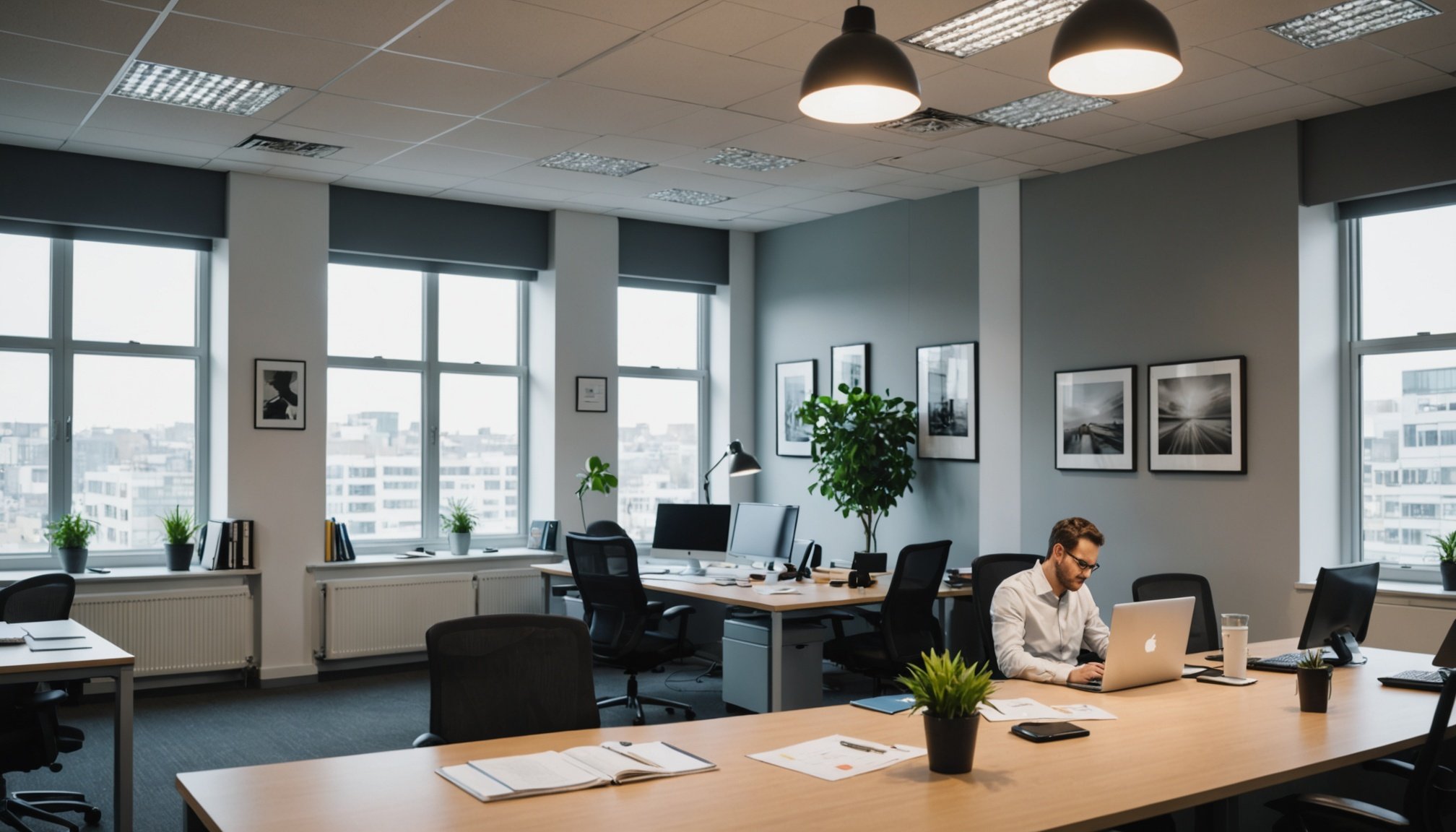The Impact of Daily Natural Light Exposure on Mood Among UK Office Workers: Unlocking Wellness in the Workplace
The Importance of Natural Light in the Office
When it comes to creating a healthy and productive work environment, one of the most overlooked yet crucial elements is natural light. For UK office workers, who often spend a significant portion of their day indoors, the absence of natural light can have profound effects on their mood, productivity, and overall well-being.
Natural light is essential for regulating our circadian rhythms, which are the internal biological clocks that govern our sleep-wake cycles. Exposure to natural light during the day helps to synchronize these rhythms, ensuring that we feel alert and focused during the day and sleepy at night. A study published in the Journal of Clinical Sleep Medicine found that office workers with more light exposure at the workplace tended to have longer sleep duration, better sleep quality, more physical activity, and improved overall health[4].
Also read : Exploring the Effects of Volunteering on the Mental Well-Being of Older Adults in the UK
The Psychological Benefits of Natural Light
The psychological benefits of natural light are just as significant as the physical ones. Natural light exposure has been shown to boost mood, reduce stress, and improve mental health. Being in nature, or even just seeing natural elements through a window, can have a positive impact on mental well-being. According to a report by the WWF-UK, spending just 20 minutes a day in nature can improve mental health, reduce anxiety, and even raise confidence levels[5].
Here are some key psychological benefits of natural light:
Also read : Unlocking Mental Clarity: How Outdoor Rock Climbing Benefits UK Adults
- Mood Enhancement: Natural light exposure can increase the production of serotonin, a neurotransmitter that helps regulate mood.
- Stress Reduction: Being in natural environments or seeing natural elements can help reduce stress levels and improve overall mental health.
- Improved Cognitive Function: Natural light can enhance cognitive function, including attention and creativity.
- Better Sleep: As mentioned earlier, natural light helps regulate circadian rhythms, leading to better sleep quality.
Biophilic Design: Integrating Nature into the Workplace
Biophilic design, which incorporates natural elements into the built environment, is becoming increasingly popular in office design. This approach recognizes the innate human tendency to seek connections with nature and leverages this to improve health, well-being, and productivity.
Here are some ways to integrate biophilic design into your office space:
- Natural Light Maximization: Use large windows, skylights, and mirrors to maximize natural light penetration.
- Green Spaces: Incorporate indoor plants, green walls, or outdoor gardens to bring nature into the workspace.
- Natural Materials: Use natural materials such as wood, stone, and bamboo in office furniture and decor.
- Nature Views: Ensure that workstations have views of natural environments to enhance the sense of connection to nature.
The Impact of Artificial Light on Health
While natural light is beneficial, artificial light, especially at night, can have negative health impacts. Artificial light, particularly blue light emitted by LEDs and electronic devices, can disrupt the body’s natural circadian rhythms. This disruption can lead to a range of health issues, including sleep disorders, depression, obesity, diabetes, and heart disease[3].
Here is a comparison of the effects of natural and artificial light:
| Type of Light | Effects on Health |
|---|---|
| Natural Light | Regulates circadian rhythms, improves mood, reduces stress, enhances cognitive function |
| Artificial Light | Disrupts circadian rhythms, increases risk of sleep disorders, depression, obesity, diabetes, and heart disease |
Practical Tips for Improving Office Lighting
Improving office lighting to enhance natural light exposure and minimize the negative effects of artificial light is achievable with a few practical steps:
During the Day
- Maximize Natural Light: Use curtains and blinds to control the amount of natural light entering the office.
- Use Cool Lighting: Select “cool” (bluer) light sources for daytime interior use to mimic natural daylight.
- Outdoor Breaks: Encourage employees to take breaks outside to get direct sunlight.
At Night
- Minimize Blue Light: Use dimmers and lower-CCT light bulbs to reduce blue light exposure.
- Warm Lighting: Select warm bulbs with low CCT (3000 K or lower) for nighttime use.
- Smart Lighting: Utilize color temperature apps that adapt electronic screens to the time of day, switching to “warm” appearing light at night[3].
Case Studies and Success Stories
Several companies have seen significant improvements in employee well-being and productivity by incorporating natural light and biophilic design into their office spaces.
For example, a study on office workers found that those with more exposure to natural light had better sleep quality, longer sleep duration, and more physical activity compared to those with less light exposure[4].
Employee Engagement and Productivity
The benefits of natural light and biophilic design extend beyond individual health to impact overall employee engagement and productivity. When employees feel better, they are more likely to be engaged and productive at work.
Here are some statistics highlighting the impact on employee engagement:
- Work Engagement: People with ‘high exposure’ to nature reported significantly higher work engagement[5].
- Productivity: Offices designed with biophilic elements have seen improvements in employee productivity and overall job satisfaction.
- Absenteeism: Reducing work-related stress through natural light and biophilic design can lower absenteeism rates. For instance, mental ill health and stress are reported to be key contributors to work absences, with 76% of people reporting stress-related absences in their organizations[5].
Incorporating natural light and biophilic design into the workplace is a simple yet powerful way to enhance the health, well-being, and productivity of office workers. By understanding the psychological and physical benefits of natural light and taking practical steps to maximize its exposure, employers can create a healthier, happier, and more productive work environment.
As Dr. Jonathan Drori, author of Around the World in 80 Trees, notes, “Nature is not just something we see; it’s something we feel. It’s a part of who we are, and it has a profound impact on our well-being.”
By embracing this connection to nature and making conscious design choices, we can unlock the full potential of our workplaces and improve the lives of everyone who works there.











